The Denmark Vesey rebellion (part 1)
Elements of an insurrection

In the spring of 1822, a group of Africans and African Americans, most of them enslaved, planned a revolt centered in Charleston, South Carolina. They would start by assassinating key officials and breaking into weapons depots. They would probably set fire to the city. They would kill as many whites as they needed to, either to escape en masse on commandeered ships to Haiti or perhaps to set Charleston up as an armed stronghold of freedom. In some accounts, those who committed to the fight numbered in the thousands. They were found out before they could strike the first blows.
The conspiracy is identified with the name of Denmark Vesey, who may have been its mastermind as his prosecutors claimed, but it’s possible that the leadership was shared among a more collective group. Most of what we do know about the plot comes from two self-serving accounts published by white officials responsible for putting down the conspiracy, plus a fairly extensive but flawed set of court records full of accounts by Black witnesses who knew they were under threat of execution and testified in closed sessions, sometimes following solitary confinement and other torture. Thirty-five were hanged.
A number of competent historians have raised questions about how much of the conspiracy was real. A few have doubted whether it happened at all. They hypothesize that white panic, perhaps coupled with the ambition and factionalism of white authorities, accounts for the whole sequence of events. It’s worth taking such doubts seriously, especially in light of more familiar cases of racist false accusations and coerced confessions such as the Central Park Five and the Death Row Ten, not to mention the baseless and contagious panics that occasionally did grip the southern white population. Nevertheless, the more I’ve looked at the evidence, the more I’m convinced that enslaved Blacks and their free allies were indeed organizing to carry out a major uprising. I’ll take up the skeptics’ views in Part 2 when I discuss the response of the white authorities.
This article, Part 1, will focus on some features of Black life in the Carolina low country that contributed to the capacity for revolt—and to the capacity for preparing an extensive one. The elements of an insurrection are really the elements of everyday life reconfigured by conscious collective will and imagination. By starting with these social raw materials of revolt I’ll be giving a partial answer to skeptics who say that the alleged plot was too far-fetched to be real. It’s also just a good way to begin explaining what happened.
But first, it would be useful to set the 1822 conspiracy in the context of some other attempts at collective armed resistance in the decades before and after this uprising.
Four conspiracies of the era
The most famous North American slave revolt of the nineteenth century is the one led by Nat Turner in Southampton County, Virginia, in 1831. It’s probably the most famous now because it was the most notorious then, killing as it did the most white people, nearly 60. Despite its fame, Turner’s revolt is a bit of an outlier among the major conspiracies of the period because it was confined to a fairly isolated rural area. Other attempted revolts in previous decades aimed to connect enslaved agricultural workers with Black residents of significant port cities.
In 1800, Gabriel and his comrades organized an army composed mostly of field workers to seize Richmond, Virginia. Richmond had fewer than 10,000 residents, but it was the state capital and an origin point for boats carrying tobacco and other goods down the James River. In 1811, the “German Coast” uprising in Louisiana started from sugar plantations along the Mississippi that were twenty miles upstream from New Orleans, the revolt’s intended destination. In 1822, the Vesey conspiracy originated in Charleston, but the plan of action called for coordinated attacks by urban and rural participants.
Turner’s relative isolation meant that his uprising, once launched, had time to develop and draw in new fighters before white authorities could respond in force. He began his attacks on plantation houses with just six other men. It was a full 36 hours before the first significant white counterattack, according to Herbert Aptheker’s classic American Negro Slave Revolts. By then, the rebels numbered more than fifty, but that was not enough to match the white militia that eventually arrived.
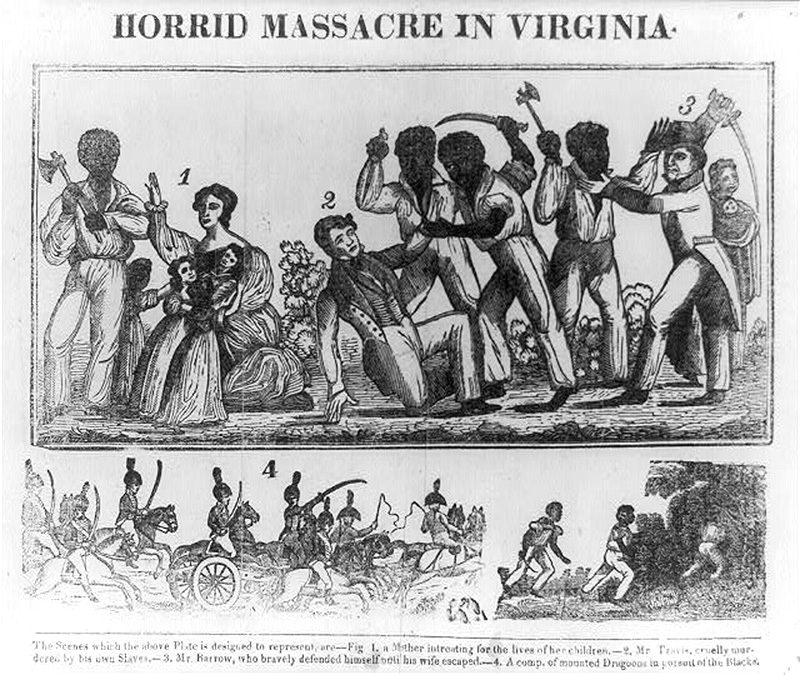
The need for broad involvement, however, made conspiracies vulnerable to discovery and betrayal. In fact, two out of three of the major urban-related revolts of the period did not even get properly launched. Gabriel’s was delayed by atrocious weather, and by the day after the deluge, the signs of the plot had become so clear that the authorities began sweeping arrests. The Vesey conspiracy, perhaps the most extensive and complex of them all, was exposed, too, just before it was supposed to begin.
Plantations, port cities, and Black threads of connection
Considered at its most abstract, southern slavery was a system that used gangs of captive workers to produce bulk farm products for export: tobacco, indigo, rice, sugar, cotton, and the like. The captor class could not reap profit from their plantations without port cities that connected them to buyers around the Atlantic and the Caribbean.
The plantation system needed the cities, but at the same time, the slaveowners strove to keep the two social spaces separate. They believed that field workers would be “ruined”—and perhaps primed for revolt—by exposure to the city’s cosmopolitan atmosphere and to free Black people, a group that was significant in many port cities but virtually nonexistent in the countryside. Even so, the very operation of the slave system created many interpersonal connections between rural and urban Black people that were hard to police. These connections helped make extensive conspiracies possible, or at least conceivable.
One type of connection arose from the slave masters’ dependence on trusted servants. Many masters commuted between their plantations and houses that they kept in Charleston, accompanied by select groups of enslaved Black people. In fact, absentee management of plantations was so common that Charleston was often the masters’ primary residence. Because of this, some Black commuters could develop extensive relationships among Black people in both town and country.
Frank was one of these servants. He belonged to Ann Wragg Ferguson, but he worked for her son James. James ran a plantation more than 30 miles outside of town in St. John’s, a parish to the northeast of the city. On occasion, Frank would drive the carriage when James traveled to various points in town and country. Ann lived on Liberty Street in Charleston, not far from the house of the free Black carpenter Denmark Vesey, who lived on Bull Street. Frank knew Vesey, maybe by reputation, by running into him in the neighborhood, or through common church membership.
In the conspiracy trials that began in June 1822, Frank said that Vesey asked him earlier in the year to recruit plantation workers to join an armed takeover of the city. After Frank testified, another witness said that Frank claimed to have “collected four plantations of Negroes” for the uprising. For what it’s worth, his boss, James, wrote to the court of his opinion that “the intended insurrection” was “well known through the neighborhood,” given “my knowledge of the means ordinarily used by negroes in communicating intelligence from one plantation to another.” Because Frank was a cooperating witness, he avoided execution and was expelled from the United States.
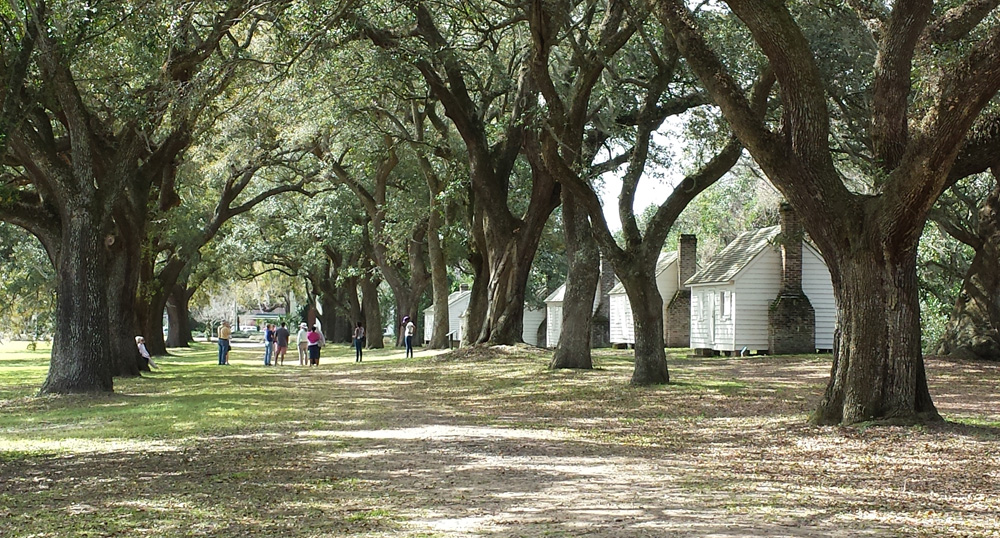
A second thread of connection was through friends and family. South Carolina’s captive workers had been considered since 1740 as chattel, a legal status akin to property in livestock. Accordingly, slave masters were allowed to separate people who were intimately connected, either by selling them off or splitting them up onto different properties. Separation could add to their isolation, but it could also create new connections between town and country, because friends and families who still lived close enough to each other would find ways to visit.
Rolla belonged to one such network. He was an enslaved domestic worker for South Carolina’s governor, Thomas Bennett, who owned rice and lumber mills in Charleston and kept fifty more enslaved workers. The mills were on the Ashley River at the west end of Bull Street, near Vesey’s house. Rolla and Vesey knew each other, perhaps at first because Vesey, as a carpenter, would have been a regular customer of Bennett’s sawmill. Rolla’s family connection to the country came through his wife. Amaritta was owned by a different master who had a rice plantation on John’s Island, which extends several miles south down the coast from Charleston. Her brother Sambo worked on the plantation, and she was in touch.
By Sambo’s own testimony, Rolla recruited him in May 1822 to join the uprising. It’s not clear whether Sambo himself became a recruiter of others on the island. He denied it in court, but of course it was in his interest to do so. Sambo wasn’t punished. In contrast, the prosecutors styled Rolla as a principal organizer for the rebellion.
Another suspected principal, Peter Poyas, also had family in the country. He was born on a plantation upstream from Charleston on the Cooper River, but he worked in town as a ship’s carpenter. Peter’s master, who owned a shipyard in Charleston, may have selected Peter as a teenager to be an apprentice shipwright; once trained, skilled workers could enlarge their owners’ profits. According to another man’s confession in court, Peter had a brother still on the plantation that he engaged as a recruiter for the uprising.
Frank, Rolla, and Peter had personal links to the countryside, but thousands of Black people of the region had a broader, cultural connection that reflected their African roots. Gullah (also known as Gullah-Geechee) is a creole language developed by enslaved Africans in the coastal complex of “sea islands” that stretches from the Carolinas into Georgia and north Florida. While the base of the language is English (with significant shifts in pronunciation), Gullah is full of West African elements. So is the material culture of the Gullahs, which is known for multiple uses of gourds (including the banjo), for woven sweetgrass items (such as baskets), and for a cuisine built around rice—a staple of much of West Africa that enslaved people introduced to the white landowners in the early eighteenth century.
Gullah Jack was a Charleston carpenter born in Africa. He was known as a conjuror or a doctor, a small man with big whiskers who carried a bag of charms and claimed that no white person could harm him. He apparently built a significant following, particularly among Black people living in the countryside. Frank Ferguson testified that Jack reported recruiting in Goose Creek and Dorchester, two adjacent areas that were upriver and inland from the city.
Mass connections between town and country
Plantation owners needed ports to connect them to remote buyers, but there was a second economic circuit that connected the port cities more intimately and constantly to the countryside. The cities needed to be fed. It was possible to import cured or pickled fish and meat, and some fresh items did come to Charleston by ship, such as oranges from Florida and pineapples and pistachios from the Caribbean. Local production, however, was the only option for fresh beef, pork, seafood, and game, poultry and eggs, and fresh vegetables. The city’s firewood was also a local product. Meeting the constant need for fresh food, especially in an age before refrigeration, required regular interaction among hundreds or thousands of people from both town and country.
The areas within a few days’ travel to cities were thus interconnected by far more than the threads that tied individuals by family or acquaintance. The domestic reproductive economy formed a dense, dynamic web. What’s more, in a time before railroads—the first rail line to Charleston wasn’t functional until 1831—the connections weren’t remote or anonymous. They were local and personal.
Some of the city’s necessary provisions were provided by white small farmers known as yeomen. They were the most numerous white people in the countryside, and they formed the rank and file of the nighttime slave patrols. Many low country yeomen owned slaves, and most of the rest were working toward the day they could. They were distinguished from the “planter” aristocracy—who, of course, did no planting themselves—by actually doing farm work with their wives and children, alongside any enslaved workers they kept. They were also distinguished by owning relatively small and poor plots of land. They practiced a “safety-first” subsistence agriculture and sold their edible products when they had a surplus. If they planted a cash crop, it would likely be cotton.
Captive Black people in the countryside outnumbered the yeomen class, and they were concentrated on the bigger plantations, especially in South Carolina’s coastal districts, where the Black population was 79 percent of the total in 1820. The coastal districts, of course, were the ones near the port cities. These facts, along with the production priorities of the yeomen, suggest that the vast bulk of fuel and fresh food provided to Charleston was produced by enslaved people who lived on the bigger plantations.
Plantations were “sales-first” regimes, so the main job of field workers was to produce cotton and rice for the owners’ profit. They were also set to work growing their own rations: flint corn principally, but also potatoes and beans. Though it may be hard to believe, the owners would then expect gratitude for “providing” this crude diet, along with the coarse clothing that was specified by law as appropriate for slaves.
Despite this double burden of forced labor, captive workers across the South were not done working. As historian Betty Wood put it:
“Sheer necessity dictated that if they were to raise their living standards above bare subsistence they would have to find ways of augmenting the minimal amounts of food and clothing distributed by their owners. Inevitably this would mean having to spend some of their own time working to support themselves.”
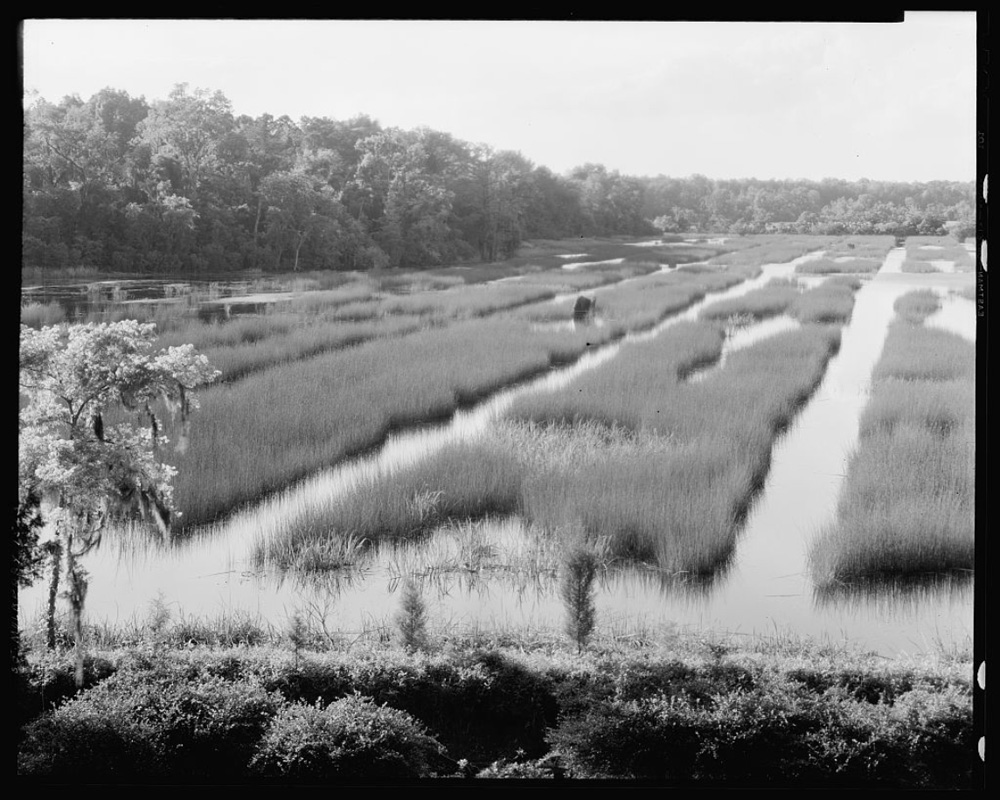
There were many things they could not grow or make themselves, so it was common across the South for enslaved people to trade what they made—whether baskets or barrels—or what they grew in their own garden plots.
The Carolina-Georgia low country had a unique labor regime that allowed the most industrious workers more time and space to work for themselves than elsewhere. The difference wouldn’t be evident when work was heaviest, as during harvests; at such times, workers on low country plantations worked as other southern enslaved Black people did, in gangs driven under the lash from morning to night. These were the times when they were most likely to hide out in the woods for a while or to set something on fire. Most of the time, however, the “task system” prevailed, under which a worker would have their own time to do as they pleased once they had completed a day’s “task.”
This regime may have originated in the earliest days of colonization when West African captives brought their knowledge of rice culture to the low country. The work might begin with clearing some part of the native cypress swamps, which were infested with alligators, venomous snakes, and infectious mosquitoes. Then they would reshape the landscape with systems of trenches, dikes, and sluice gates in order to flood or to drain the fields at appropriate times in the growing season.
In a rice swamp (as these rice paddies were called), a day’s work or a “task” would be to turn up one-quarter acre of land at the beginning of the season or to hoe the weeds in a half-acre later on. Other plantation jobs were also broken into daily tasks. Splitting one hundred rails, for example, was counted as one task. Where cotton was the crop, low country plantations also applied the task system.
The system encouraged efficient work with little need for supervision, since most workers would be eager to finish the “master’s time” and begin their own. Not everybody went on to work for themselves, but many did. Their own fields were not just “garden plots.”
Jeremiah Evarts observed [in a 1822 diary entry] that the slaves in Chatham County, Georgia [surrounding Savannah], had “as much land as they can till for their own use.” [After emancipation, the] freedmen’s recollections from all over the lowcountry support this statement: a number of ex-slaves reckoned that they had more than ten acres under cultivation, while four or five acres was the norm.
Some raised free-range cattle and hogs, which would cover even more ground, and others specialized in raising horses for sale.Some of the produce of the country went to market over the roads, either carried on people’s heads, as in Africa, or on horse-drawn trucks called drays. But roads were “few and poor,” as one historian noted. The common way to transport things was by water: “Most of the low-country plantations were on or near navigable streams and had their own boats.”
Some people bartered or sold their produce directly to traders—both white and Black—who brought their boats to the plantations. Many others took their goods to town themselves by boat. Enslaved people in town also had access to boats for their own use. Gullah Jack owned a canoe that he used on his trips to recruit for the rebel army. Rolla Bennett borrowed a boat for the same purpose.
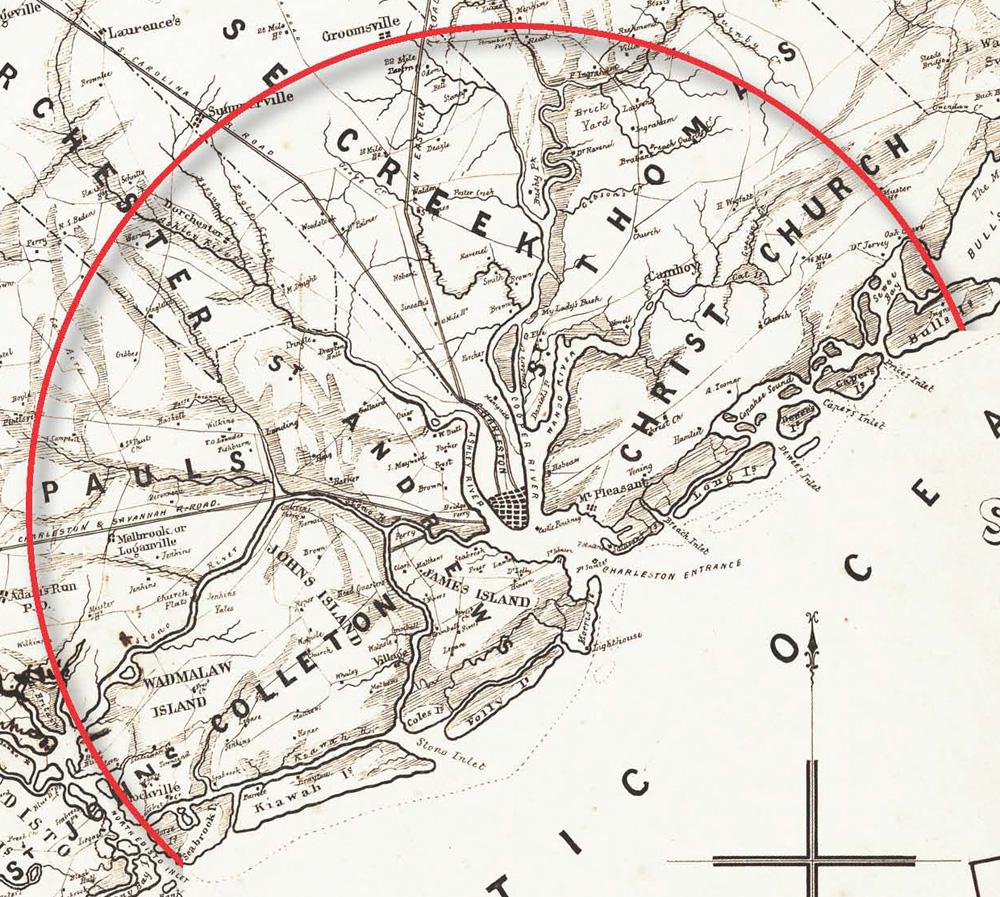
One reason for traveling to town was to seek out the best prices and the best variety of goods to buy. But Sundays were also a major social event—the main market day in town, which coincided with the fieldworkers’ day off. Black people from the countryside would mix with Black and Brown city folk, all dressed in their finest. They would come to see and be seen, to make connections and make mischief, and to hear the latest news.
In this way, the universal desire of the captor class to keep rural Black people isolated on the farms was thwarted weekly by the necessity of provisioning the city—and by the farmworkers’ own determination to get there. The official report of the 1822 conspiracy trials make it clear that some plantation slaves knew their way around town, because some found their way to Denmark Vesey’s house for at least one night meeting.
No one tried to estimate the size of the weekly in-migration to Charleston until news of the conspiracy broke. Then the city’s chief executive, counting only those coming by boat, found that “upwards of five hundred entered the city on one Sunday.” This was during the trials and a general tightening of security, which made “negroes … rather fearful of coming into town.” Charleston’s regular population was just under 25,000 in 1820.
Even on uneventful Sundays, Charleston called out two police bodies to deal with the crowds. One was the City Guard, a force wearing blue jackets that was otherwise on duty only at night. They were issued muskets with bayonets. Twenty patrolled in squads around the city all day on Sundays (as they did nightly), “and in addition, patrols of a sergeant and four men were sent to three different markets at six o’clock every Sunday morning.” The other force was under the command of the city marshal. “On Sundays,” one historian of policing writes, “he and his deputy were to take two constables, or more, and patrol the city morning and afternoon, particularly to observe and suppress indecent or riotous behavior and to enter any place that liquor was sold.”
In this time before the invention of modern police with round-the-clock patrols, Charleston was by far the most heavily policed major city in the United States, and, not coincidentally, the only one where the majority of people was enslaved. The City Guard’s main work was to enforce laws that applied only to people of color. There was one city guardsman for every 238 residents, or one for every 141 people of color. For comparison, today’s Washington, D.C., with its many police forces, is the most heavily policed U.S. city with one cop of some variety for every 154 people.
Land in between: Charleston Neck and Bulkley’s farm
Between the inland plantations and the city lay Charleston Neck, where Black South Carolinians enjoyed perhaps their greatest freedom from white surveillance.
The city of Charleston, surrounded on three sides by water, stood at the southern tip of a peninsula between the Ashley and Cooper Rivers. Its city limit was at Boundary Street (today’s Calhoun Street), and the land north of there was Charleston Neck, a place that had become a “low-income suburb” early in the city’s history. Many residents of the Neck were enslaved people living on their own. Although this practice, called “living out,” was illegal without written permission from their masters, many got permission, and the law was loosely enforced, anyway. There were always landlords, as there were sellers of alcohol, who were more concerned with a Black person’s ability to pay than they were with the legality of the transaction.
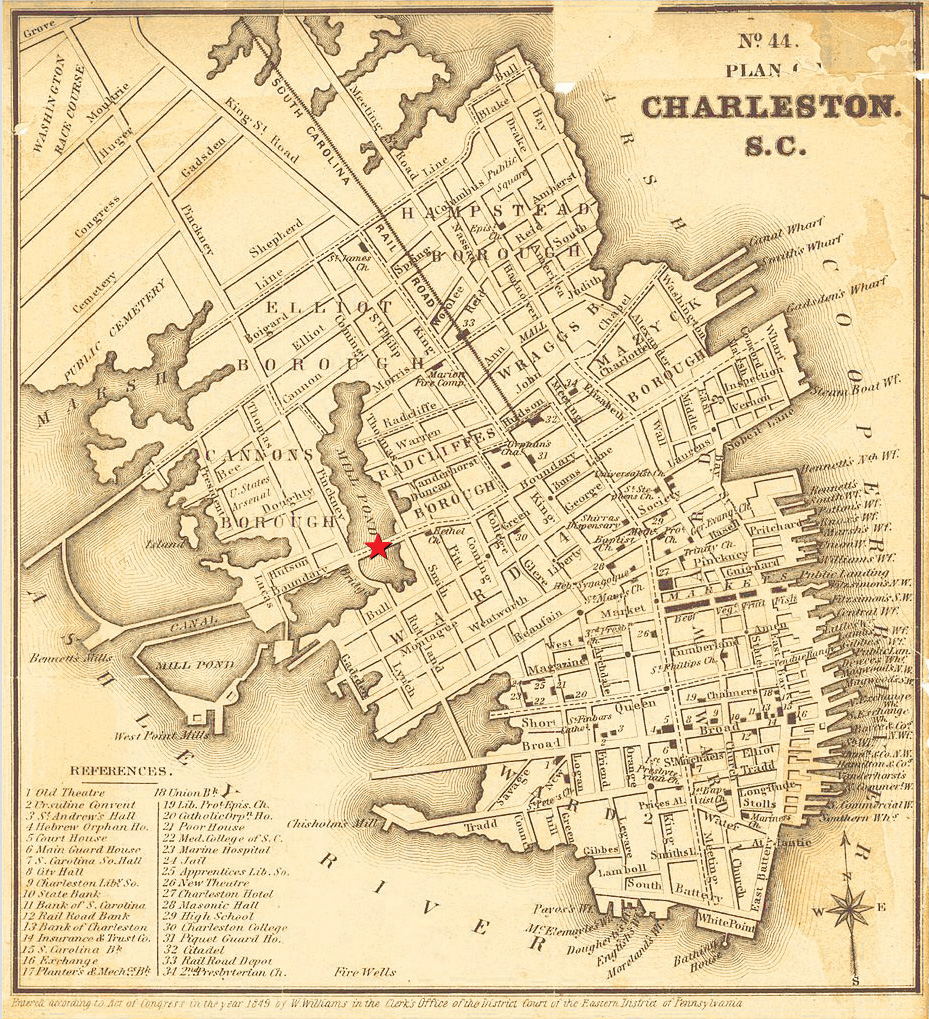
Those who “lived out” earned the money to pay their rent by “hiring out” for wage labor or by working on their own account. The most common personal enterprise for enslaved women was to buy and sell in the markets, and men most commonly hired out as porters, a broad category that included day laborers, carters, and draymen. In many places in the South, enslaved people had to hand over their entire wage to their owner—something that Frederick Douglass complained about in discussing his work in the shipyards of Baltimore. In Charleston, however, masters found they could gain a steady income by charging some of their slaves a flat fee to find their own work. In the 1820s, annual profits from such arrangements were about 10 percent of the market value of the enslaved worker. These workers could pocket the difference between the fee they paid their masters and the wage they earned.
This practice of “self-hire” was also illegal, but it was convenient for the masters to avoid the effort of finding paid jobs for their captive workers. City and state officials might be keen to pass laws to restrict Black freedom of movement, Black freedom of association, or Black economic enterprise, but at the same time they were reluctant to enforce laws that interfered with the freedom of the slaveowners to use their human property as they wished. Members of the captor class shared an ideology that favored a minimal state power that served mainly to preserve their own status as patriarchs of private, profit-driven despotisms. Where the state was developed more extensively, as in the case of the City Guard, it was in service to this aim.
Although Charleston Neck was growing much faster than Charleston itself, the area was only lightly patrolled. It was outside the city’s jurisdiction, and the city council failed to raise the funds for a force there on the model of the City Guard. Instead, there was a volunteer branch of the state militia known as the Neck Rangers. The Rangers seemed to function less efficiently than either the rural slave patrols or the City Guard. White petitioners complained that the “dense and numerous” population made the area unsafe for travelers and “particularly … [for] the waggoners of the upper country, who are often molested and robbed.” The area was full, they said, of “disorderly houses, unruly negroes and wicked and depraved persons of every class.”
The “disorderly houses” included the homes of free people of color who served drinks to enslaved guests. They also included taverns and stores that served liquor to a multiracial clientele, which likely attracted members of the diverse crews from ships that arrived daily in port. In fact, some of those who sold liquor to customers regardless of color were shopkeepers whose night-and-weekend job was with the City Guard. The Neck was a good place to meet secretly. “Peter Poyas had private conferences with many negroes in the suburbs of the Town,” one comrade confessed later.
Farther up Charleston Neck, the residential areas faded into farmland, an area so close to town that plantation owners could visit by day and sleep every night in Charleston, leaving their property under the charge of a trusted slave. Bulkley’s farm was two and a half miles from the city along the Cooper River, accessible by road, or, for those who wanted to avoid detection, by boat. Billy was the enslaved Gullah left in charge, and the farm became a prime nighttime meeting space for the rebel conspirators.
Gullah Jack met his rural followers there. Vesey was “in the habit of going to Bulkley’s farm,” said one witness, and others confirmed his presence. In April, Billy later told the court, Peter Poyas and four others came to the farm in the afternoon and “sung and prayed until day light.” Another comrade confessed that he attended a meeting there with “upwards of thirty persons present.”
Jack was later accused of engaging a Gullah blacksmith to make pike-heads to be fitted to poles acquired by another Gullah recruit; they were to be stored at Bulkley’s farm for the use of country comrades when the time came. The area would apparently serve as a staging ground for these comrades before the assault on the city. Frank Ferguson was said to have “told Vesey … he would go and bring down the people [from the country] and lodge them near town in the woods,” presumably near the farm.
Monday Gell and the news
Enslaved people in the South were eager to keep up with the news, and most of it was passed on by word of mouth. The testimony of 1822 reveals that Black conversations often began with “What news?” an appropriate greeting for people who were aware that whites were trying to keep them in the dark. Just as their captors tried to isolate farmworkers from what they could learn and who they could meet in the city, they tried to separate the oral world from the wider perspective of the literate one. In response, those who couldn’t read sought out those who could; the readers bridged the divide between the two social worlds. This was true even in the city, where slave literacy was the most common.
One of the prisoners of 1822 explained why he was a frequent visitor at Monday Gell’s shop on Meeting Street: “When I went to Monday’s, it was to hear what was going on … as what was going on was printed in all the papers so that black as well as white might read it.” Gell apparently kept newspapers on hand that visitors could pick up and read themselves.
Monday Gell was an expert harness maker. He may have learned the craft in Africa, in the region that’s now Nigeria. His first language was Igbo, but he spoke English well, and he could read and write “with great and equal facility.” Monday was enslaved, but he was so successful at his trade that he had a home of his own in addition to his workshop. The legislature had repeatedly prohibited enslaved artisans from setting up their own shops, in part because it undercut the welfare of white artisans. The repeated passage of such laws attests to the slaveholders’ routine practice of ignoring them.
Gell’s house was next door to Gullah Jack’s, and witnesses said the two were close associates. Monday was one of the central figures in the conspiracy, and his shop seems to have been the daytime hub for those involved to connect with each other. He admitted to the court that “every day there were numbers in my shop on this business.”
The newspapers were written for white consumption, of course, so they carried regular classified ads with descriptions of escaped captives. According to the 1820 census, Charleston was 56 percent Black and Brown (also known as mulatto)—14,127 people of color to 10,652 whites. Thus the city and the Neck offered some anonymity for runaways.
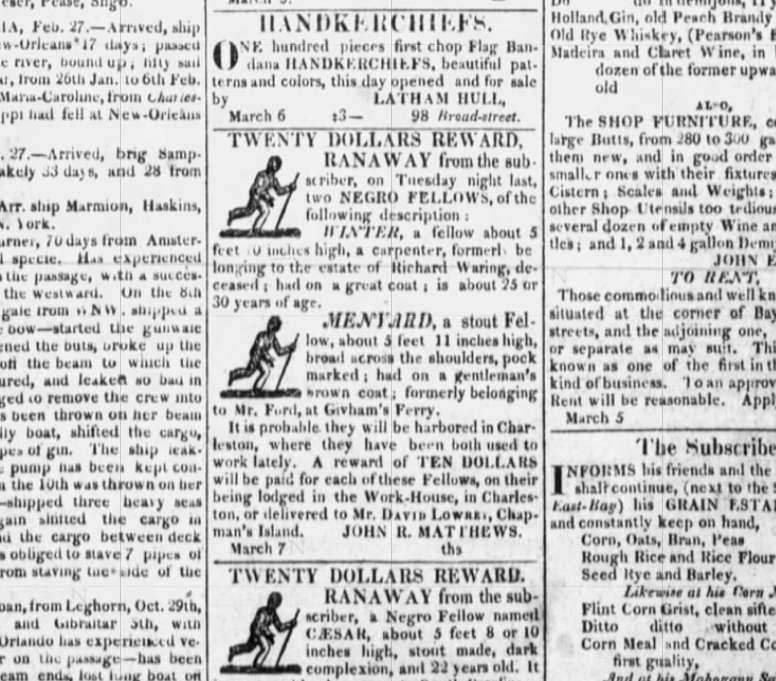
The papers also carried accounts of torture and murder of enslaved Black people—and of white impunity. These could serve as agitational material for rebel recruiters. One correspondent to the Charleston Courier in 1818 was sure that crimes by whites had increased in recent years and wrote, “There are persons in the parish in which I reside, who, within a year have killed negro slaves by severe whipping and other barbarous treatment—have stolen horses, cattle and hogs, and committed forgery; and are now running at large and unapprehended.” A year later the Courier reported a “jury of Inquest … on the body of a female Negro Slave” that concluded she was murdered “by her owner, Christiana Hornsby.”
The state’s “Negro Code,” in force with various amendments since 1740, declared that a master’s murder of their slave was punishable with just a fine. On another page, the code detailed several property crimes which, if committed by a person of color, would result in execution. Not until 1821 did a white person’s murder of a slave become a capital offense.
The stories in the papers confirmed how bad things could get at their worst, but everyday Black life was full of humiliation, violence, and the threat of violence by whites. One rebel comrade said that Gell induced him to join by emphasizing how they were “in servitude, kicked and cuffed and abused, &c. &c.” The Negro Code allowed Black people the right to use violence to protect their masters but not in defense of themselves. A later statute specified: “If a slave was found off the plantation and refused to submit to investigation, any white had the right to kill him summarily.”
Discussions in Gell’s shop also took up national news. The Congressional debates in 1819–1820 over the admission of Missouri as a slave state still reverberated among Charleston’s Black population two years later, in part because press accounts had covered (and condemned) the vehement opposition of some northern legislators. Both Monday Gell and Denmark Vesey seem to have misrepresented the debate, however, saying that Congress had set everybody free, but South Carolina was not complying. They may have been confused themselves, or they may simply have been stoking the will to fight among the more credulous of their followers.
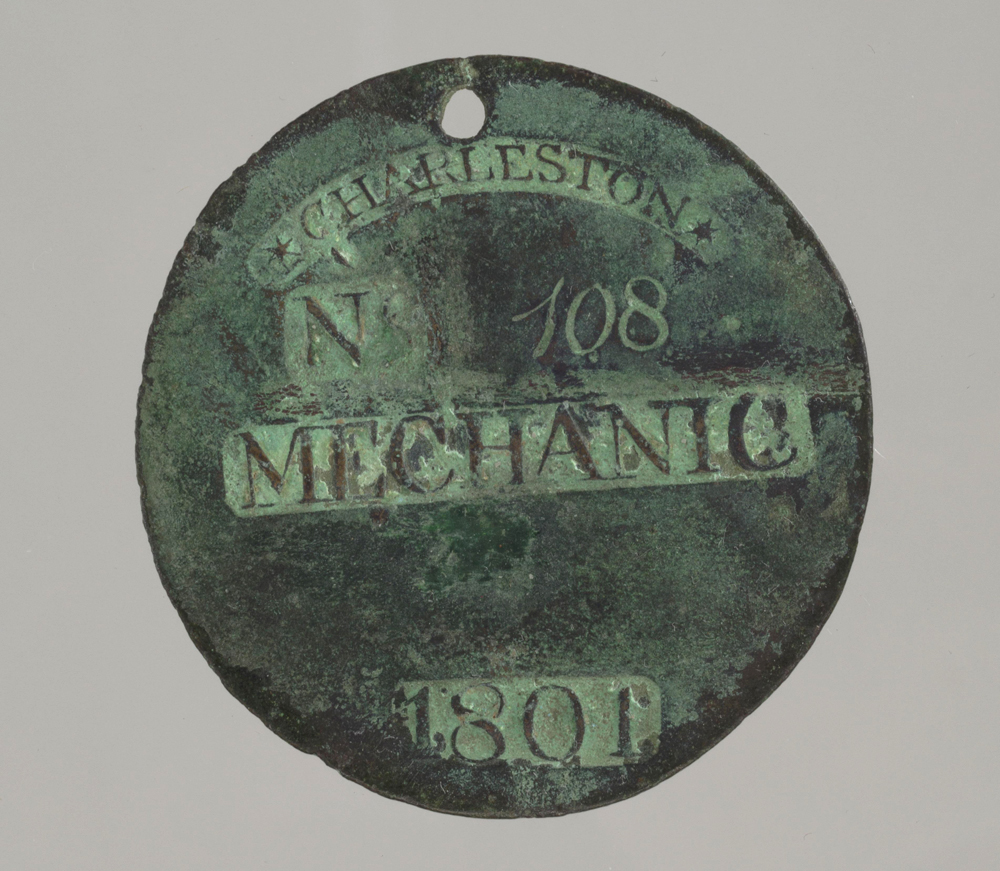
The papers also carried notices about Haiti, the Black republic on the Caribbean island of Hispaniola that had finally become independent in 1804 after 13 years of revolt. Charleston had taken in refugees from the revolution, so a section of the Black population possessed some direct knowledge of the place to back up what was in the papers. The most frequent mentions of Haiti in 1822 were in the columns of shipping news, which detailed regular arrivals and departures to and from Haiti. Sailors just in from Haiti could offer Black Charlestonians up-to-date information about the place.
In February of that year, Haiti invaded and annexed the Spanish side of Hispaniola (Santo Domingo). President Jean-Pierre Boyer was apparently trying to make Haiti more secure against attack from Spain and France. Charleston papers focused on the points that were important to white readers. The Charleston Mercury’s brief February 14 account of the invasion concluded: “The Island is now entirely in the power of the colored people.” On April 2, the Mercury ran a dispatch that read, in full:
“Arrivals from Santo Domingo bring accounts of the whole of the slave population of Spanish Santo Domingo having been emancipated. Nothing less could have been expected from the political change which so lately took place in that territory. It is in perfect conformity with the constitution of Hayti.”
Monday Gell testified later that Saby Gaillard, a free Black carpenter, dropped by his shop to find out whether Monday had read the paper he had given him about “the battle that Boyer had in St. Domingo”—perhaps the same report as above. Saby said that “if he had as many men he would do the same too, as he could whip ten white men himself.”
Haitian militancy served as more than an example to emulate. Close readers of the dispatches from the Haiti war, such as Gell and Vesey, seem to have concluded that Boyer might be willing to devote military resources to emancipating slaves outside of Hispaniola. The Charleston organizers apparently wrote at least one letter to Boyer seeking his assistance in their uprising, to be passed on by sailors on trips to Haiti, though it is unclear whether these messages were delivered or how they might have been received.
Escape to Haiti was also part of the discussion. Haiti had publicly offered citizenship to Black and Indigenous immigrants since 1816. For Boyer, either course—direct military intervention or welcoming in rebels from South Carolina—would invite a confrontation with the superior forces of the United States. In the worst case, the U.S. government might press a war aimed at re-enslavement of the island’s Black people. Even an embargo or blockade would cause dire consequences for the impoverished Black republic.
The trial record contains no evidence that Charleston rebels talked about the constraints on what Boyer could do. In their secret discussions, Haiti figured as inspiration, as possible military ally, and possible destination.
Some of the regular visitors to Monday Gell’s shop were customers, of course, including draymen who needed him to work on harnesses for their horses. One of these was William Garner, whose role among the conspirators, according to Gell and another witness, was to organize a mounted contingent for the insurrection.
Vesey as a recruiter
Denmark Vesey himself was an avid reader, often for the purpose of exhorting others to rise up for their own freedom. He is known especially for his study of the Bible, but he also followed U.S. and international politics. One convicted comrade confessed:
“He was in the habit of reading to me all the passages in the newspapers that related to St. Domingo [Haiti], and apparently every pamphlet he could lay his hands on, that had any connection with slavery. He one day brought me a speech which he told me had been delivered in Congress by a Mr. King on the subject of slavery; he told me this Mr. King was the black man’s friend.”
Two of New York Senator Rufus King’s speeches on the Missouri question were available in pamphlet form, and this may have been what Vesey was reading. The rhetorical point of bringing up King was the same as in mentioning possible military assistance from Haiti: Others will help us, but not until we strike the first blows ourselves. Another witness quoted Vesey to precisely that effect: “St. Domingo and Africa will assist us to get our liberty if we will only make the motion first.” Along the same lines, Vesey then asked him,
“[I]f I remembered the fable of Hercules and the Waggoner whose waggon was stalled, and he began to pray [to Hercules], and Hercules said, you fool put your shoulders to the wheel, whip up the horses and your waggon will be pulled out: that if we did not put our hand to the work and deliver ourselves we should never come out of slavery.”
A white clergyman’s remarks offer one more example of the way that Denmark Vesey recruited comrades by challenging them to stand up for themselves. The clergyman, who was unsympathetic to the rebellion, recounted what Bacchus Hammet told him about an evening meeting at Vesey’s house:
“Vesey sat him [Bacchus] along side of him … He asked him seven queries such as—“Did His master use him Well—Yes he believed so, Did He eat the same as His master, Yes sometimes not always as well as his master—Did his master not sleep on a soft bed, Yes. Did he Bacchus sleep on a soft a Bed as his master—No—Who made his master—God—Who made you—God—And then ar’nt you as good as your master if God made him & you, ar’nt you as free, Yes, Then why don’t you join and fight your master. Does your master use you well, Yes I believe so, Does he whip you when you do wrong, Yes sometimes, Then why don’t you as you are as free as your master, turn about and fight for yourself. Upon this delusive reasoning he joined.” [Emphasis and stray quotation mark in original.]
On other occasions, Vesey appealed to solidarity with less-fortunate Black people. In his testimony against Vesey, Frank Ferguson describes an encounter before he was convinced to join:
“Vesey said the negroes were living such an abominable life, they ought to rise. I said I was living well—he said though I was, others were not and that ’twas such fools as I, that were in the way and would not help them, and that after all things were well he would mark me.”
Vesey knew that race-conscious solidarity was not automatic, so his appeal to Frank’s conscience concludes with a threat of the sort that a union activist might make to a potential strikebreaker.
In the last weeks before the projected date of the insurrection, Vesey stopped working at carpentry “and employed himself exclusively in enlisting men,” according to Monday Gell.
Denmark Vesey and the city
At 55 years old, an advanced age for the era, Denmark Vesey was the oldest of the principal organizers. He also had a comparatively wide range of experience. Born enslaved, possibly on St. Thomas, he spent some time as a boy in pre-revolutionary Haiti. Then he served for several years on board the ship of Captain Joseph Vesey as his personal assistant. The captain was in the Caribbean slave trade, so the boy visited many ports. Joseph named him Telemaque after the son of Odysseus. Black English speakers apparently turned the name into Denmark.
The two settled in Charleston in the 1780s, and Joseph started a business as a ship’s chandler, a multi-purpose supplier, with Denmark as his assistant. In his work with Joseph, he became literate and numerate, and he was fluent in French. In the 1790s, Denmark married his first wife, Beck, and they had at least one child, Sandy, who later joined the rebel conspiracy. Then, in late 1799, Denmark won $1,500 in Charleston’s East Bay lottery, and Joseph agreed to his self-purchase for $600. Once free, he would eventually become a carpenter.
He may have tried to buy the freedom of his wife and son, but if so, he failed. This meant he could not live in the same household with them. After parting with Beck sometime later, Denmark went on to marry two other enslaved women and to have more children. His second wife and her children remained enslaved. His third wife, Susan, was born enslaved but was later freed, perhaps at the time of their marriage in the 1810s. In 1820, the state legislature claimed the exclusive right to free individual slaves, thus outlawing private manumissions of the sort that had freed Denmark and likely freed Susan.
Denmark Vesey’s background made him an anomaly among the city’s free people of color, because his original and persisting interaction and identification were with the enslaved. Among the city’s 1,475 free people of color, a large portion was mulatto and free from birth. They were products of sex between white males and captive females, some from encounters as far back as a century before. The most sentimental among the fathers had freed their Brown children and set some of them up in business. Free people of color were thus riven by color castes—Denmark was Black and recently freed—but they were also divided by class. Some free people of color were rich from real estate speculation, others through trade, and one was the city’s best-known hotelier. Some kept enslaved people themselves, and at least one even rode patrol with the Neck Rangers.
Enslaved people living in the city were not divided by such major class distinctions, but there were still layers. People’s occupations ranged from personal servants (such as Rolla Bennett and Frank Ferguson), to hired-out laborers who cherished their independence (such as the drayman William Garner), to artisans who were the most independent of all (such as the carpenter Gullah Jack Pritchard, the shipwright Peter Poyas, and the harness maker Monday Gell). The women who traded in the markets must also have cherished their independence. In Part 2, I will take up the invisibility of women in the records of the revolt.
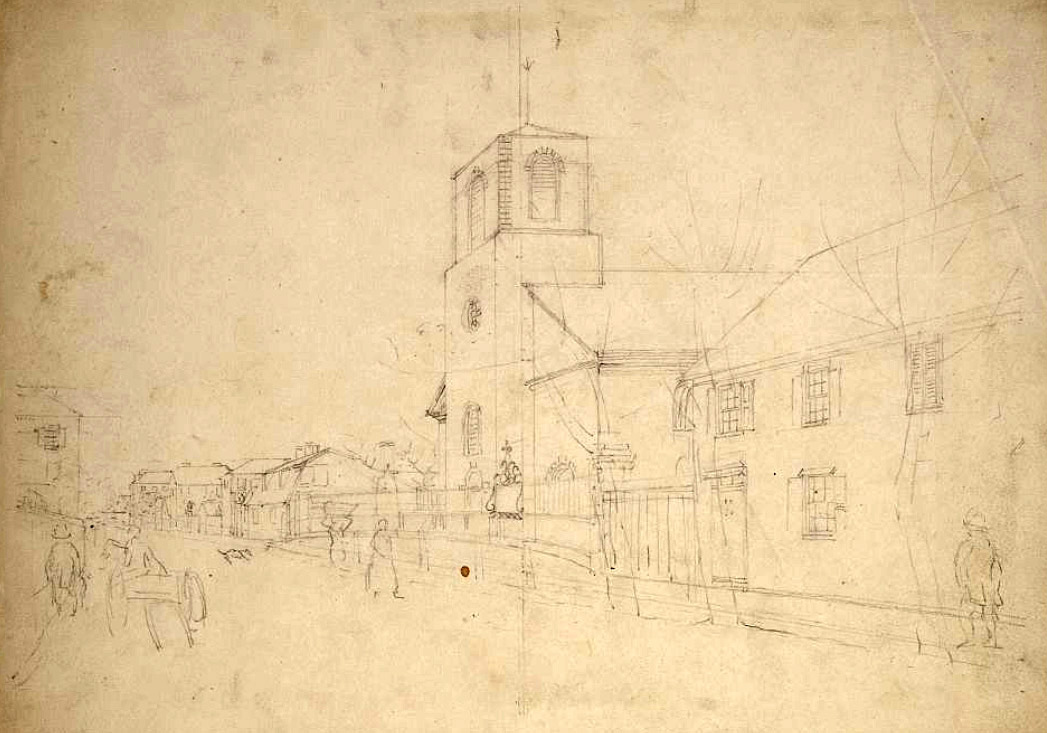
Historian Eugene Genovese remarks on the role played by these social layers of the men in slave revolts throughout the hemisphere:
The magnitude of the task facing slaves who chose insurrection suggests the importance of leaders with considerable knowledge of political events in general; of the divisions among whites; of military prospects and exigencies; of terrain; of the psychology of their people; of ways to get arms and trained fighters; of everything. Mechanics, craftsmen, preachers, drivers, even house slaves played a big role in the great slave revolts. Both rebel leaders and supreme accommodationists came from the same ranks, for they were men of wider experience than ordinary field hands and had talents they could turn in either direction.
Clandestine organizers in the city needed fine capacities of discernment to tell which way a prospective recruit might turn. Vesey’s experience certainly helped. Peter Poyas also expressed a concrete way of evaluating a person’s loyalties. As a former comrade put it, Peter “said … take care and don’t mention it to those waiting men who receive presents of old coats &c. from their masters or they’ll betray us, I will speak to them.”
Genovese lists drivers among the “middling” layers between the masters and the fieldworkers. These plantation foremen had a popular reputation for brutality, and some lived up to it. Nevertheless, they were workers who understood how the whole farm worked, and the masters chose them for their ability to motivate and lead the fieldworkers. As such, they had to be trusted to some extent by both the masters and their fellow slaves. One of the primary leaders of the German Coast uprising in Louisiana was a driver, and the driver on James Ferguson’s plantation was involved with the rebellion. Billy Bulkley may also have been a driver.
Drivers became leaders on the plantations in the course of their work, but the relatively atomized life of enslaved Black people in the city presented fewer opportunities for the development of formal leadership or sustained collective action. Life in the churches provided an exception. In the white-led Baptist and Methodist churches where Black Charlestonians were concentrated in the 1810s, the church members of color were divided into classes that were led by free people of color or enslaved Black people. Historian Bernard Powers notes in Black Charlestonians: “It was the responsibility of the class leaders, where possible, to visit their charges weekly and attend to their spiritual and moral needs.” Powers continues, “In 1818 … 4,367 blacks seceded from the Methodist Church and formed the African Church, which was affiliated with the African Methodist Episcopal [AME] Church in Philadelphia. The secession involved over three-fourths of all the city’s black Methodists.”
The new church fostered leadership and collective self-help by people of color from top to bottom. Although several white ministers endorsed the founding of the church, white authorities and many citizens viewed it with fear and suspicion. The city raided the church in 1818 and arrested 140. Large gatherings of people of color had long been illegal in South Carolina. The AME Church survived this and other harassment, however, and came to be known simply as the African Church. Its members included enslaved and free Black people and free mulattoes.
Given its circumstances, the church could not develop an abolitionist theology officially, but some African Methodists did precisely that on their own. One was Denmark Vesey. Another was David Walker, a free Black man from North Carolina who moved to Boston and published the influential 1830 Appeal to the Coloured Citizens of the World. Walker and Vesey both mixed together the republican faith of The Declaration of Independence—that God created all men equal with a natural right to liberty—with interpretations of scripture that justified rising up with violence to escape bondage. It’s possible that Walker belonged to Charleston’s African Church at the time of the 1822 conspiracy or in the years just before it.
Many of those accused in 1822 belonged to the church, including Monday Gell, Rolla Bennett, and Gullah Jack. Jack’s practice of sorcery evoked “contempt and disgust” in the white Christians who later sat in judgment of him, but his beliefs were no bar to membership in the Afro-Christian AME of Charleston. Two others who were identified by the court as organizers of the rebellion were class leaders: Ned Bennett (like Rolla, a captive worker for the governor) and Peter Poyas.
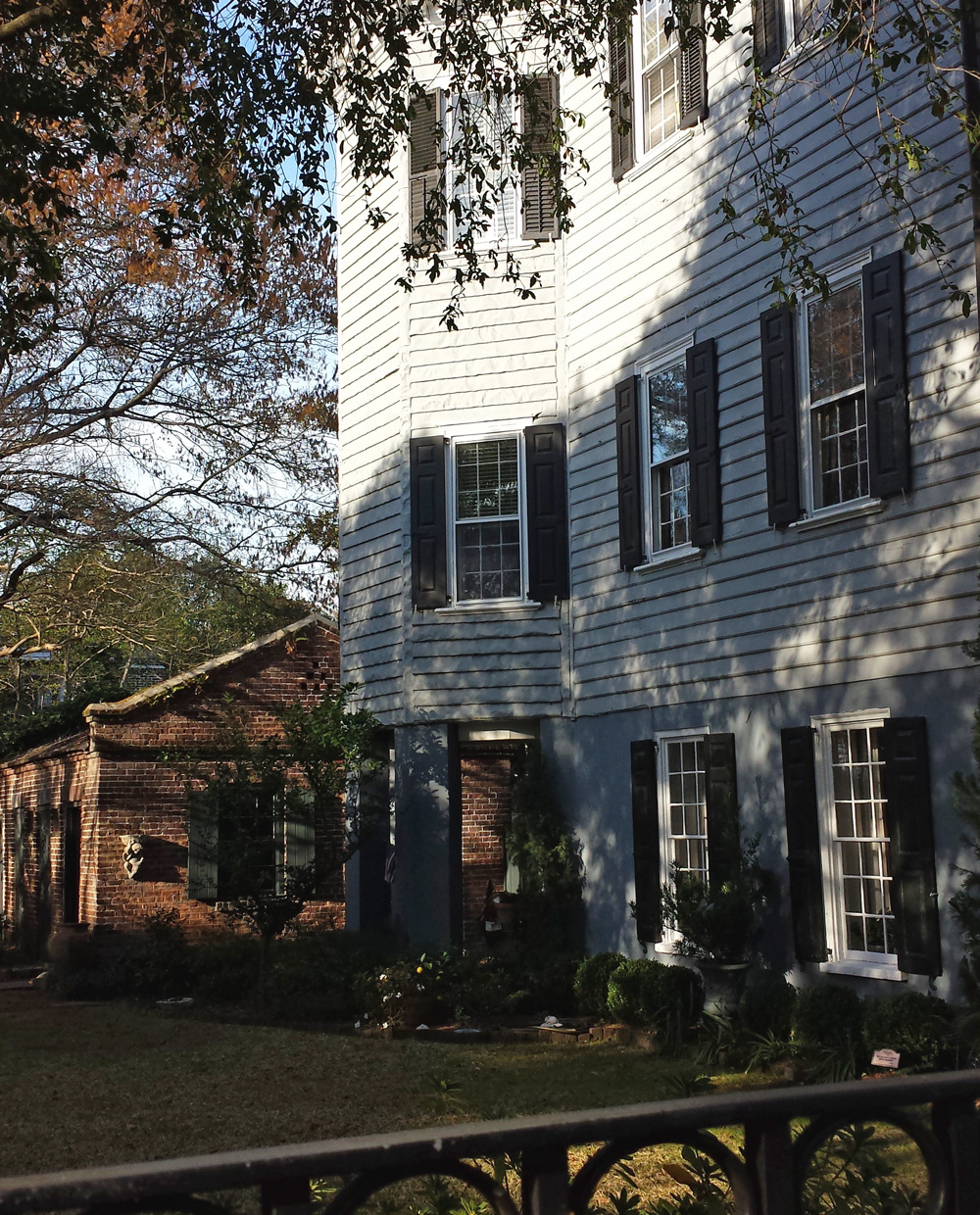
In spring 1822, Vesey hosted regular evening meetings at his Bull Street house that drew together other principals, other comrades in the rebellion, and potential recruits. Although these meetings took up some of the practical work of preparing the uprising, they also focused on motivation, recruitment, and induction—which included swearing an oath not to reveal the planned revolt. Witnesses said that the meetings began with readings of Biblical passages that Vesey thought were most relevant to their project.
One of the passages was from the Book of Joshua, which contains the tale of the Israelites’ destruction of Jericho and the slaughter of its inhabitants. Having made their escape from captivity in Egypt, the Israelites were subduing the land of Canaan. Even though God had promised them the land, they still had to take it for themselves to fulfill his will. The passage casts mass violence in a righteous light, but in choosing it, Vesey may also have intended to cast Black people as an oppressed collective—a people comparable to the Israelites.
What’s more, the reading would have additional resonance because of the way it compared to the strategy that Haitian revolutionary Jean-Jacques Dessalines eventually devised to win the long war for freedom: Start killing the whites until they are all dead or forced out. At one meeting Vesey hosted, he made the Haitian connection explicit, according to a comrade: “Denmark Vesey said, he thought it was for our safety not to spare one white skin alive, for this was the plan they pursued in St. Domingo” (emphasis in original).
Another passage Vesey shared was Zechariah 14:1–3, which prophesies the destruction of Jerusalem, including the killing of one-half of the city and God’s intervention to allow the other half to escape. The previous chapter makes clear that God thought Jerusalem needed to be cleansed of sin and refined, like a precious metal, through fire. Here Jerusalem may stand for Charleston and Haiti for the destination of the escapees. It’s not clear, however, whether the sinful half includes just the white portion of the city or their Black collaborators, too.
One of Vesey’s Bible readings that related directly to slavery was Exodus 21:16: “And he that stealeth a man, and selleth him, or if he be found in his hand, shall surely be put to death.”
The readings add up to more than a simple message of violence in support of a righteous cause. Those who attended Vesey’s meetings didn’t need to be told that if they rose up and failed, they would die. It was kill or be killed. The comparisons to the Israelites and to the Haitians could help comrades frame in their minds the shape, significance, and magnitude of their project.
Rhythms
The insurrection was set for July 14. Denmark Vesey probably knew that it would be the anniversary of the storming of the Bastille during the French Revolution, but the timing of the revolt was really chosen because it was then that several cycles of white power were set to bottom out all at once.
The first cycle, or rhythm, involved an annual white migration to avoid coming down with the deadly form of malaria caused by plasmodium falciparum. The rice swamps were breeding grounds for mosquitoes, and malaria had been endemic to South Carolina since the early years of colonization. White families left the plantations, but they didn’t all go to Charleston. “It was agreed,” said one witness, “to rise [up] in July … as at that time the white people go to the North and to Sullivan’s Island and the City would then be thin of men” (emphasis in original).
Sullivan’s Island, on the outer reaches of Charleston Bay, was surrounded by circulating saltwater with frequent breezes, so mosquitoes were not a problem. At the time, people did not know that mosquitoes were a vector of the disease, but they did associate malaria with areas of stagnant fresh water. Those who didn’t go to the exclusive Sullivan’s Island enclave or make the trip to super-rich northern resort towns like Newport, Rhode Island sought the “dry sandy soil of the Pine-barrens, and on their heights breathe health and life,” according to a visitor in 1836. One such resort was Pineville, situated about sixty miles north of Charleston. In July, therefore, white men would not just be “thin” in the city but virtually absent from the larger plantations near Charleston.
The yeomen class could not afford to migrate. Some were stuck near swampy areas, but many of their estates were on the poor—but elevated—“sand-hill” or pine barren land between the rivers. Mosquitoes would not be such a problem there. In any case, the departure of the rich would not fully deplete the rural slave patrols.
People of African descent, who were forced to stay at work in the country, had partial immunity to malaria if they were heterozygous for the sickle-cell gene. The rates of debilitation and death, however, could still be staggering. Data from just before the Civil War reveal malaria mortality rates that were nearly the same for infected Blacks and whites.
A second major life rhythm played out over a time scale of years or decades. There were periods when restrictions on Black activity were relaxed, followed by periods of crisis, panic, and crackdown. Even where the law specified precisely what Black people could not do, much of the law was, in effect, a prescription for what white people privately should prohibit. In peaceful times, if something was to the profit advantage or the convenience of the slaveowners, the law would be a dead letter.
Innumerable other routine practices were both critically important and illegal. In theory, enslaved people had no property rights to anything they produced, but without those rights in practice, rural Black people would have had no incentive to produce consumption goods in their “own time” for exchange in the city. Enslaved people were forbidden to buy goods for resale, but this freedom is what made the Sunday markets work and kept the city fed. Black control of boats was just as essential to the reproductive economy, but that, too, was illegal (except for licensed fishermen), as was the raising of livestock for sale.
While these routines were essential, they also underpinned a confident Black collective life that threatened, at times, to breach white control on a major scale. Until those moments, however, there were times when the enforcement of many laws would be lax, as it was in spring 1822. For example, the City Guard was issued muskets with bayonets, but right before the crisis broke in June, they were apparently carrying bludgeons instead of muskets, and their bayonets were sheathed.
The third key rhythm was the alternation of day and night. The plan called for the rebels of the coastal districts to converge on Charleston by boat at midnight. Slave patrols would be out, but with the plantation masters absent, the patrols would be overwhelmingly composed of yeomen, who were concentrated upriver, not in the coastal districts.
The last major social rhythm was weekly. July 14 would be a Sunday, market day, when hundreds of country workers streamed into town. Rebels could blend in. The rhythms of the city marshal and the City Guard were built around the need to control the Sunday crowds. In the evening, when the Black visitors usually left, the marshal and his deputies would go off duty.
For their own part, the City Guards would have begun their duty by performing their regular Saturday night patrol, which started at the city’s curfew time for people of color. Then they were to keep patrolling during the day on Sunday. Even with squads rotating and taking breaks in the guardhouse as they were directed, they would no doubt be exhausted by Sunday night. The city ordinance specifying their duty declared that they were supposed to serve yet another shift after Sunday curfew. Nevertheless, all of the court witnesses who mentioned the guard’s schedule—and the court officials themselves—said that the City Guard would go off duty before midnight on Sunday.
The rebels among Sunday’s visitors could arrange to stay after curfew in Black people’s houses in the city or the Neck. To jump into action at midnight, they would just need to step outdoors. Others would come down from the country and await the moment farther up the Neck at Bulkley’s farm. The white people who remained on the farms were unlikely to miss these field workers until Monday morning, and by then it would be too late to do anything. In the morning, the fight for the city could be well advanced, and people in the country might wake to see the sun rise through a big plume of smoke over Charleston.
A footnoted version of this article will appear at Works in Theory.
Featured image credit: Artwork by Nevena Pilipovic-Wengler.
Categories
We want to hear what you think. Contact us at editors@tempestmag.org. And if you've enjoyed what you've read, please consider donating to support our work:
DonateDavid Whitehouse View All
David Whitehouse is a member of the Tempest Collective in Oakland. Some of his
writings appear at Works in Theory.
